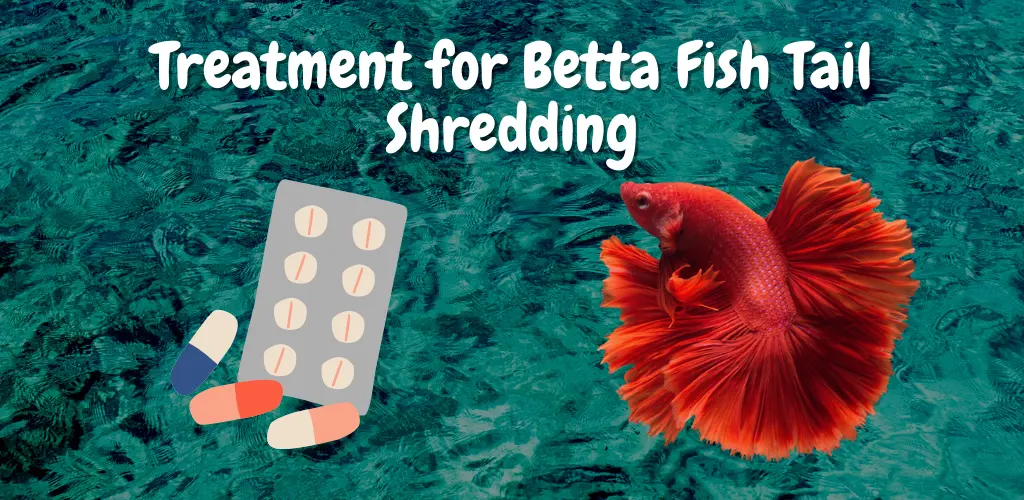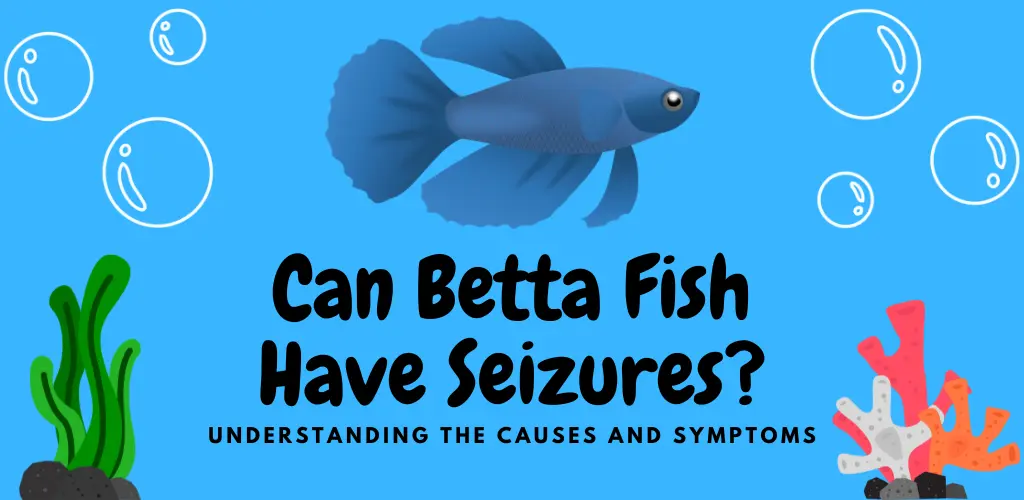Betta fish, also known as Siamese fighting fish, are popular aquarium pets for their vibrant colors and flowing fins. However, one of the common problems that betta fish owners may encounter is Why Is My Betta Fish Tail Shredding? Tail shredding is when the fins of a betta fish appear frayed, torn, or shredded, and various factors can cause it. In this article, we will explore some of the common causes of tail shredding in betta fish and what you can do to prevent and treat it.
Why Is My Betta Fish Tail Shredding?
Poor water quality
One of the most common causes of tail shredding in betta fish is poor water quality. If the water in the tank is not properly cleaned and filtered, it can become contaminated with harmful bacteria and toxins. These toxins can damage the fins of a betta fish, causing them to shred.
Ammonia buildup
Ammonia is a toxic byproduct of fish waste and uneaten food. If the ammonia levels in the tank are too high, it can cause damage to the fins of a betta fish. This is especially true if the tank is overstocked or not properly cleaned.
Parasites
Certain parasites, such as Ich and fin rot, can cause tail shredding in betta fish. These parasites can infect the fins of a betta fish, causing them to shred and disintegrate.
Fighting
Betta fish are known for their aggressive nature and often fight with other betta fish, even in a community tank. Fighting can cause damage to the fins of a betta fish, leading to tail shredding.
Genetics
In some cases, tail shredding can be caused by genetics. Some betta fish are naturally prone to shredding fins and may have weaker fins.
Bacterial Infection
A bacterial infection is one of the most common causes of tail shredding in betta fish. Bacteria such as pseudomonas and Aeromonas can infect the fins of betta fish and cause them to become frayed and discolored. This type of infection is often the result of poor water quality and is more likely to occur in overcrowded tanks or have poor filtration.
Fungal Infection
Fungal infections can also cause tail shredding in betta fish. Fungi such as Saprolegnia and Ichthyophonus can infect the fins of betta fish and cause them to become frayed and discolored. Fungal infections are often caused by poor water quality and are more likely to occur in tanks with poor filtration or recently undergoing a water change.
Physical Trauma
Physical trauma can also cause tail shredding in betta fish. This may be caused by the fish getting caught on sharp objects in the tank, fighting with other fish, or getting stuck in the filter. Physical trauma can also occur due to handling the fish too roughly.
How to Prevent Betta Fish Tail Shredding?

Preventing betta fish’s tail shredding requires proper care and maintenance. The first step is maintaining good water quality by regularly changing the water and using a good water conditioner. This will help to remove toxins and bacteria from the water, which can damage the fins of the betta fish. Additionally, it is important to use a good filtration system appropriate for the size of the tank, as this will help keep the water clean and clear.
Next, providing your betta fish with a balanced diet high in protein, vitamins, and minerals is important. This will help to ensure that your fish has the nutrients it needs to grow and repair its fins. Be careful not to overfeed your fish, as uneaten food can contribute to water pollution, which can cause tail shredding.
Creating a comfortable and low-stress environment for your betta fish is also essential. Bettas are sensitive to changes in their environment, so keeping the water temperature, pH level, and water flow consistent is important. Additionally, you should avoid placing your betta fish in a tank with aggressive or territorial fish, as this can lead to fighting and tail shredding.
Another important factor is providing your betta fish with adequate swimming space. Bettas are active fish that needs to move and swim around. Keeping them in a tank that is too small or with many obstacles can cause stress and restrict their movements, which can lead to tail shredding.
Lastly, it would help if you were consistent with your betta care. Sudden changes in water conditions, temperature, and pH levels can stress the fish, making it more susceptible to tail shredding. It’s also a good idea to observe your fish regularly. That way, you can quickly notice any changes and address them before they become a more serious problem.
Treatment for Betta Fish Tail Shredding

If your betta fish is already showing signs of tail shredding, it is important to address the underlying cause as soon as possible.
If the tail shredding is caused by poor water quality, the first step is to do a large water change and clean the tank thoroughly. Additionally, you should increase the frequency of water changes and use a water conditioner to help remove toxins and bacteria from the water.
If parasites cause tail shredding, you will need to treat the tank with a medication specifically designed to kill the parasite in question. You should also perform a large water change and clean the tank thoroughly before and after the treatment.
If the tail shredding is caused by fighting, you may need to separate the fish to prevent further damage. If the shredding is caused by genetics, there is not much you can do.
If the tail shredding is severe, you may want to isolate the fish and give it extra attention as you watch for any signs of further complications, such as fin rot.
In conclusion, tail shredding in betta fish can be caused by various factors, including poor water quality, ammonia buildup, parasites, fighting, and genetics. In addition to the methods mentioned earlier for preventing and treating tail shredding, you can do a few other things to help your betta fish recover from this condition.
Proper Diet
Providing your betta fish with a balanced diet is essential for maintaining their overall health, including the health of their fins. Feeding your betta fish a diet high in protein, vitamins, and minerals will help them grow and repair their fins. Be careful not to overfeed your fish, as uneaten food can contribute to water pollution, which can cause tail shredding.
Create a Comfortable Environment
Creating a comfortable and low-stress environment for your betta fish can also help to prevent tail shredding. Betta fish are sensitive to environmental changes, so keeping the water temperature, pH level, and water flow consistent is important. Additionally, you should avoid placing your betta fish in a tank with aggressive or territorial fish, as this can lead to fighting and tail shredding.
Adequate Swimming Space
Another important factor is providing your betta fish with adequate swimming space. Bettas are active fish that needs to move and swim around. Keeping them in a tank that is too small or with many obstacles can cause stress and restrict their movements. This can cause them to bump and rub against the tank’s decorations or other fish, leading to tail shredding.
Tail shredding can be a serious problem for betta fish, but with the right care and attention, it is possible to prevent and treat this condition. By maintaining good water quality, providing a balanced diet, and creating a comfortable and low-stress environment, you can help your betta fish to recover from tail shredding and enjoy a happy and healthy life in your aquarium.
In short, maintaining proper water quality, providing the right diet, keeping the tank clean and providing your betta fish with a comfortable and safe environment will help you to prevent and treat tail shredding issues.
Keep in mind that if your fish is suffering from stress, its fins will be the first to show signs. Taking care of your betta fish and keeping a close eye on its fins can help ensure that your fish remains healthy and happy for years to come.
It’s also important to note that fins will take time to heal and regrow, so it’s essential to be patient and avoid any further stress or injuries.
It would be best if you also were consistent with the water conditions, temperature, and pH levels. Any sudden changes can slow down the healing process.
Consider adding some aquarium salt to the water, which can help reduce inflammation and bacteria and promote fin healing. But it would help if you used it moderately and always watch out for any adverse effects.
Lastly, some over-the-counter remedies like fin rot treatments or products are specifically made to enhance fin health, like betta fish vitamins and supplements. But it’s best to consult an experienced aquarist or a veterinarian before using any product to ensure they are safe and appropriate for your fish.
Conclusion
In conclusion, the question Why Is My Betta Fish Tail Shredding? is answered, tail shredding in betta fish can be caused by various factors, including poor water quality, ammonia buildup, parasites, fighting, and genetics. By maintaining good water quality, providing a balanced diet, and creating a comfortable and low-stress environment, you can help your betta fish recover from tail shredding. Be patient and consistent with your betta care, and always seek professional advice if unsure about any aspect of your fish’s health.





Pingback: Obese Betta Fish: Causes And Prevention - Betta Fish Advice
Pingback: Bump On Betta Fish Head: Causes And Treatments - Betta Fish Advice